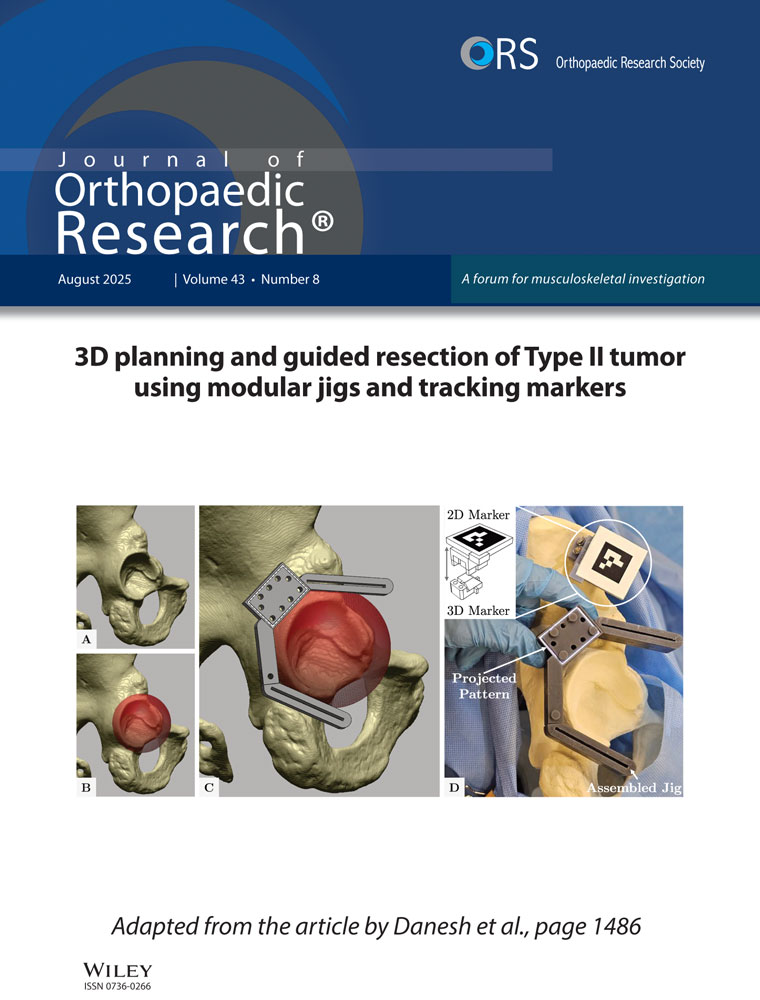Tensile properties of articular cartilage are altered by meniscectomy in a canine model of osteoarthritis
Abstract
Loss of or damage to the meniscus alters the pattern of loading in the knee joint and frequently leads to cartilage degeneration and osteoarthritis. The mechanical properties of articular cartilage have been shown to reflect the extent of cartilage degeneration in human osteoarthritis and in experimental models of joint disease, but there is little experimental data documenting changes in cartilage mechanics following meniscectomy. We hypothesized that the tensile properties of the surface zone of articular cartilage are altered following total medial meniscectomy. Twelve mongrel dogs underwent complete resection of the medial meniscus in the right knee, and the femoral cartilage was studied 12 weeks after the operation. We performed uniaxial, tensile stress-relaxation tests to determine the equilibrium tensile modulus of surface-zone cartilage. Water and glycosaminoglycan content were also measured at site-matched locations. The tensile moduli of the cartilage decreased significantly following meniscectomy. The linear region modulus decreased by 40%, from 25.5 ± 7.7 to 15.3 ± 7.2 MPa. There was a weak (r = −0.45), but significant, correlation between the linear region modulus and the gross morphological grade for cartilage damage. Water and glycosaminoglycan content did not change following meniscectomy. Composition was not correlated with mechanical properties or morphological grade, suggesting that cartilage structure may play a more important role than composition in determining the mechanical properties. The observed decrease in cartilage material properties provides a quantitative measure of the loss of cartilage function following meniscectomy and reflects a pattern of change that is consistent with damage to the collagen-proteoglycan solid network.




